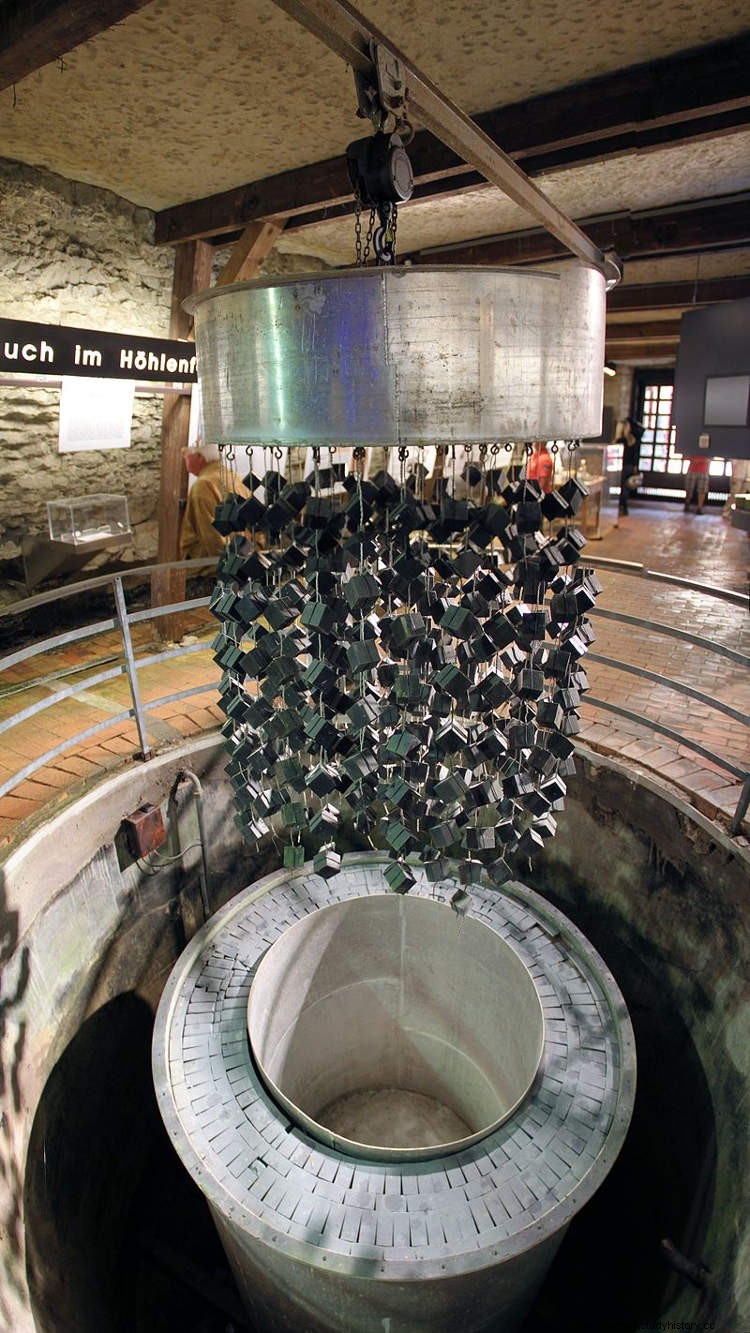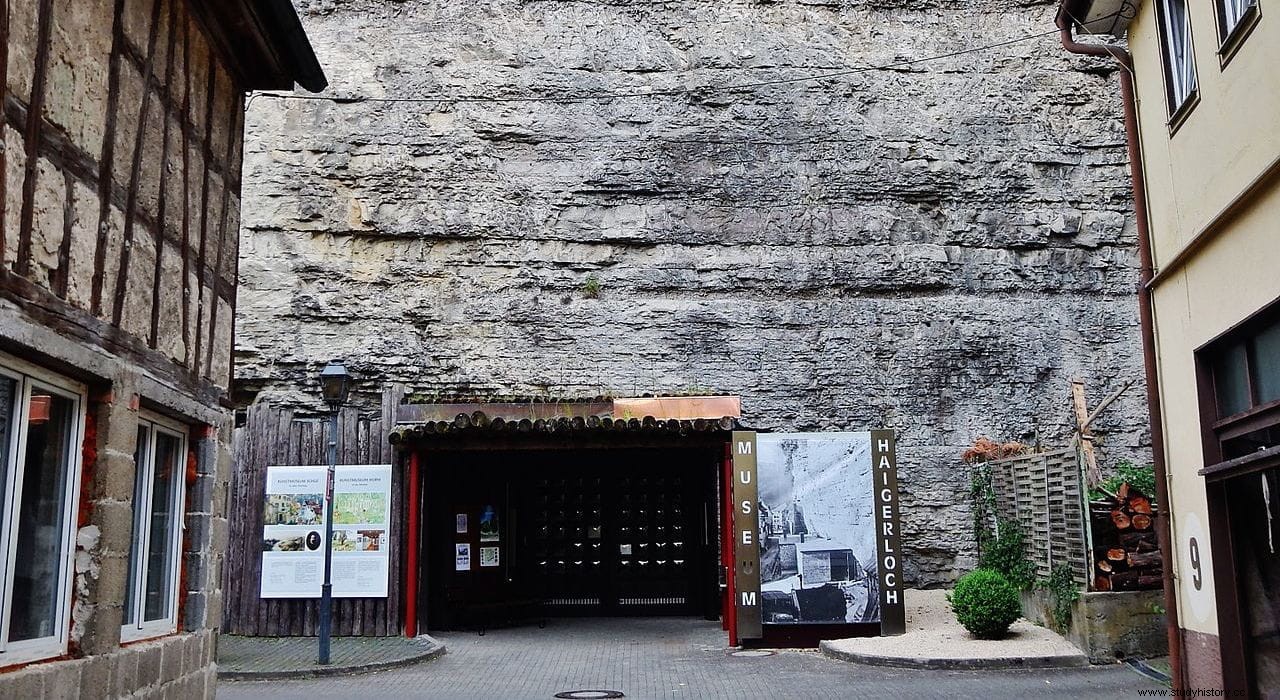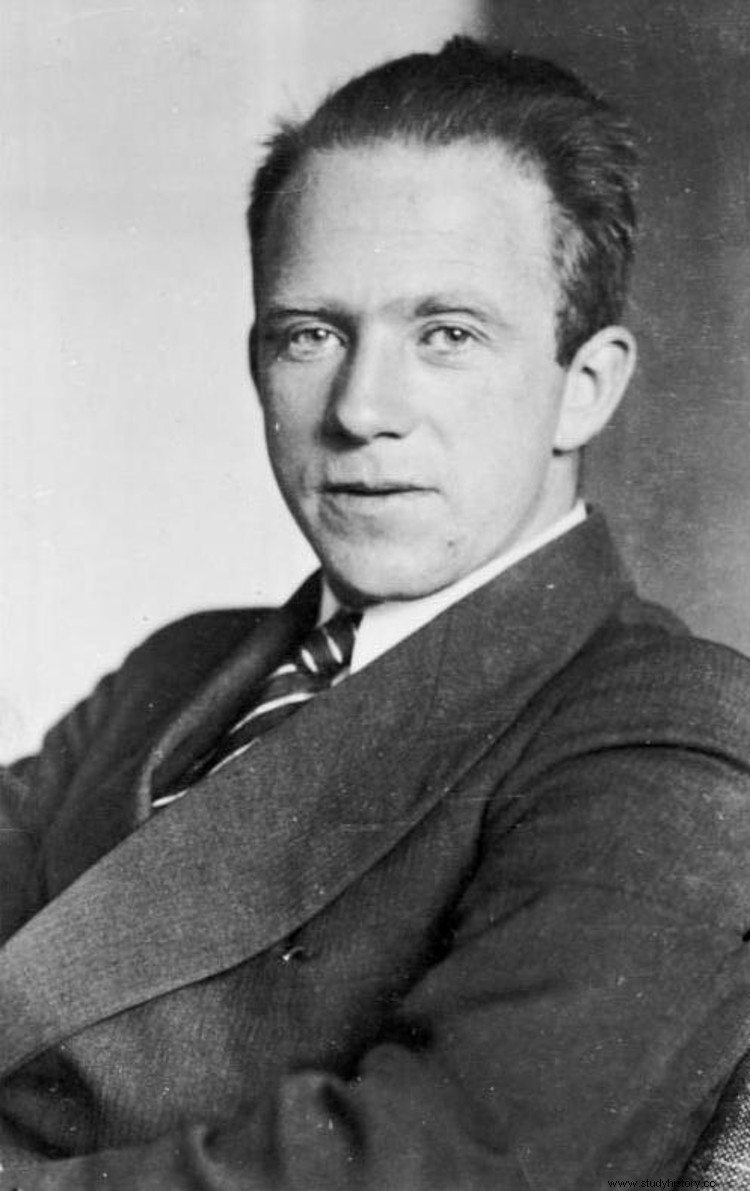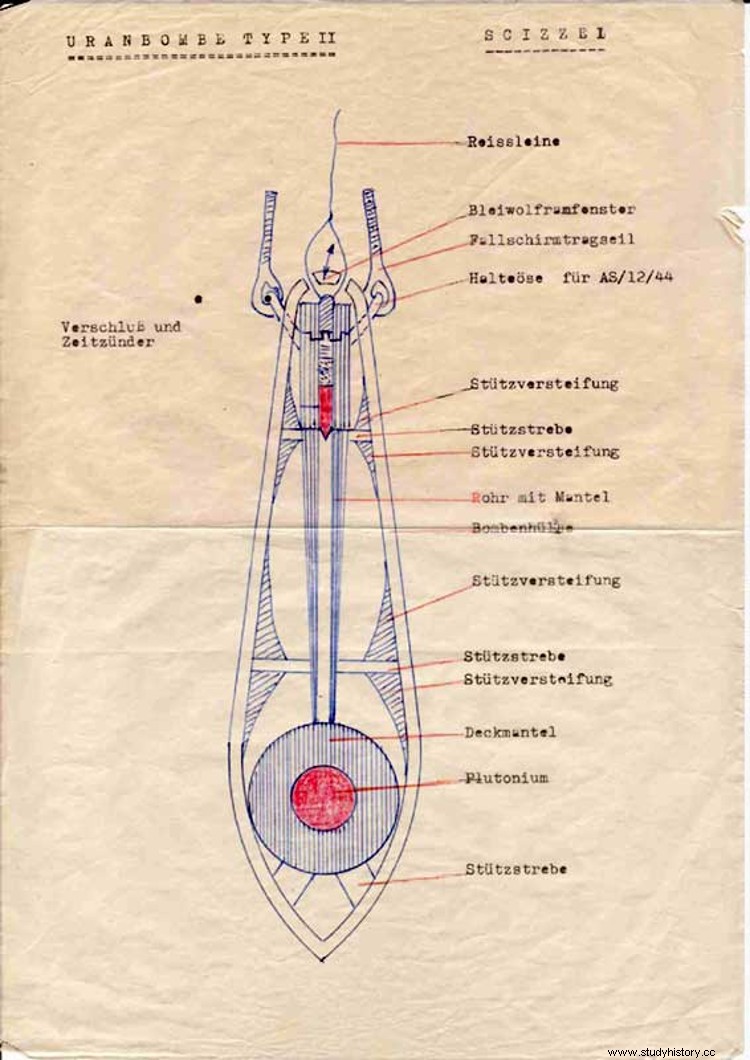In the summer of 2013, Professor Timothy Koeth of the University of Maryland received an unusual birthday present:a package containing a small black cube about two inches on a side and weighing about five pounds. An accompanying note explained both succinctly and enigmatically:“Taken from the reactor Hitler tried to build. Ninninger's Gift» . The cube in question was made of uranium, one of those that were part of the Nazi regime's attempt to build a nuclear reactor during World War II.
At the end of 1938, the German physicists Otto Hahn and Fritz Strassmann managed to obtain barium after bombarding uranium with neutrons in what is considered the first nuclear fission test, as another scientist, Otto Robert Frisch, baptized it, after experimentally confirming it a few weeks later. The following months were feverish as speculation about the possibilities that opened up was unleashed, forming a team of physicists that was officially called Arbeitsgemeinschaft für Kernphysik but which was popularly known as Uranprojekt or Uranium Project (in the English version, Uranvein ).

Shortly after, a second team was organized and the work was oriented towards military application, for which it was necessary to build a reactor. That was always the objective, because Hitler was never able to understand the world of the atom and, therefore, he was only exposed to a brief outline of the potential that a bomb would reach, for which he was not very interested. The problem was time, since it was calculated that there would be no way to get a reactor before five years and the outbreak of war seemed more and more imminent. Once the war had started, the scientists were clear that they would not be successful in the short term and that is why the work was distributed among nine institutes:these were dedicated to obtaining uranium, those to manufacturing heavy water (in Norway about five tons were made per year), some to separate the isotopes and others to build the reactor. They added a total of seventy specialists with Hermann Göring at the supreme command of the project.
However, the progress of the war forced resources to prevail in the war effort, so that in the fall of 1942 there was a break. By then it was estimated that an atomic bomb could not be made before 1947, so alternatives were proposed such as developing a uranium engine for the Kriegsmarine . But the following summer Albert Speer managed to get the job restarted and ordered all the available uranium (some 1,200 tons) used on the job. What happens is that the Uranprojekt it already had a competitor in the US, the Manhattan Project , which would end up being ahead despite starting two years later. According to the experts, this was due to the fact that - media superiority aside - the participants worked together in the same direction instead of disaggregating efforts like the Germans, who were divided into three groups working separately in three cities (Berlin, Leipzig and Gottow) and vying for resources. This would be confirmed, as we shall see.

Let us now return to the University of Maryland, where Professor Timothy Koeth began to investigate the origin of the peculiar package received. The note spoke of the reactor projected by Hitler, which in the winter of 1944, with the Allies already entering Germany, did seem an attainable achievement in the face of the frustrated bomb. Koeth, who had already verified the authenticity of the cube, remembered a name:Werner Heisenberg. He was the director of the Kaiser Wilhelm Institute and probably the most notable physicist to take part in the Uranprojekt , which is why he was given the directorship, although he always maintained that he and his team focused their efforts on making a reactor and neglected the question of the bomb due to ethical scruples.
The fact is that, with the enemy already on German soil, it was ordered to move the works from Berlin to Haigerloch, a small city in the southwest of the country, settling in the local castle, where the Atomkeller Museum is currently located. There they carried out the B-VIII experiment (the B was the reference to Berlin), described by Heisenberg in a work that he would publish in 1953, Nuclear Physics . In it he said that they had six hundred and sixty-four cubes of uranium, each weighing about five pounds, which were submerged in a tank full of heavy water linked together by cables hanging in strings from the lid. A wall of graphite surrounded the set. It was the reactor in question, which never worked because it didn't have enough uranium; it would have needed 50% more, which also implied a greater amount of heavy water.
The cube received in Maryland was one of these, as evidenced by its measurements, weight and appearance (each face has a surface with holes left by bubbles during the rough casting process, the type of pre-processing at the time). In addition, the notches made to pass the cable can be seen in it and an analysis with a high resolution gamma ray spectroscope revealed that the composition is natural uranium, neither enriched nor depleted. Likewise, -and this is important-, it does not have products resulting from a fission (caesium 137, for example), which allows us to confirm that the reactor did not work. Another possibility is that for some reason that particular cube was not used but, in any case, it is clearly one of the Uranprojekt ones. .

The big question was how the cube got to the US and the answer lay in Operation ALSOS . It was commissioned by Leslie Groves, the general in charge of the Manhattan Project , and consisted of sending a unit of soldiers and scientists to the front line to collect information on the German atomic program in all its fields. As the Allies advanced on Haigerloch, it became clear to the Germans that they no longer had time to continue their investigations and they were ordered to make all equipment disappear. The documentation was hidden in an outhouse, the heavy water was poured into barrels, and the uranium cubes were buried in a nearby field. When the ALSOS people came to the city at the end of April 1945, they arrested the German physicists but not all of them; Heisenberg had managed to flee at night, on a bicycle, taking several of the buckets with him.

The Allies soon found the documents and the water, as well as unearthing the buried buckets. All this was sent to Paris and from there to the US under the control of the CDT (Combined Development Trust ), an Anglo-American entity created to prevent the Soviet Union from acquiring such material. The cubes are supposed to have gone to ORNL (Oak Ridge National Laboratory), the center created to house the massive facilities and staff of the Manhattan Project , which was initially going to continue experiments in nuclear weapons (later refocused on science and medicine); but, apparently, not all arrived.
Timothy Koech's investigations led him to discover a box kept in the National Archives and labeled German Uranium . It contained hundreds of recently declassified documents revealing that, in addition to the Haigerloch cubes, there were another four hundred in Germany; specifically in Gottow, where Dr. Kurt Diebner was trying to develop another reactor. That means that if the Gottow and Berlin teams had worked together, they would have had enough uranium and would surely have gotten a working reactor before the war was over.
All these cubes, previously unknown, were sold in Eastern Europe by a gang of smugglers who took advantage of the growing demand for uranium on the black market during the postwar period. In fact, they also tried to sell this unique commodity to Western countries for hundreds of thousands of dollars each, although they were unsuccessful because the United States had uranium left over and would only accept to buy it at the market price, which was about twelve dollars per unit. kilo. But sporadic offers continued to arrive and in 1952 two Germans were arrested and sentenced to life imprisonment for possession of one of those cubes, which proved the existence of the plot. However, most of the units ended up in the USSR… and there the trail ends, although a sketch of a German atomic bomb was recently discovered in the Soviet archives.

It only remains to return to the previous question:how did the cube from Maryland come to America? Timothy Koeth was looking for literature on the subject in a bookstore when he came across a 1954 work titled Minerals for Atomic Energy . Its author was called Robert D. Nininger, the same last name that appeared in the mysterious note only with a Jan less. It seemed like too much of a coincidence, so he followed up and found out through a phone call that the individual in question had died in 2004…in Rockville, Maryland. It turned out that Nininger had worked in the uranium acquisition section of the Manhattan Project and, therefore, he was in charge of receiving the cubes that were sent from Europe. His widow told him that she had had the cube all that time but then it changed hands several times before she got to college.
This fascinating story was not a unique case because there are at least ten other cubes in American private and public collections (Smithsonian Institute, Harvard University, etc.), each supposed to have its own interesting story. As for Heisenberg, he was eventually captured and interned, along with other scientists like Otto Hahn, in an English concentration camp. There he heard on the radio the news of the explosion of the Hiroshima atomic bomb and spent the next two days making calculations of the critical mass and the amount of uranium needed for it; They were so close that it seems likely that, had circumstances and will changed a little, he and his crew could have achieved it sooner.
